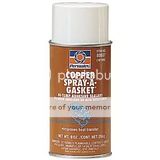Walter F.
New Member
Just got back from Harbor Freight, got a new Torque Wrench and I'm dying to try it out. Does anyone KNOW or have an expert guess at the torque number for the head bolts. I have a 49cc with M6 cap screws, I don't use studs, I can use either inch pounds or newton meters. It seems somewhere I saw a number like 12 newton meters, does this sound about right? Happy Trails Walter F.






